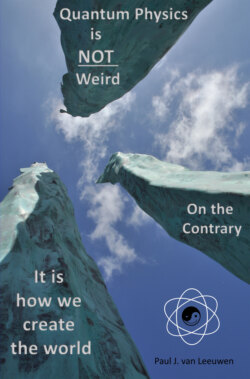Читать книгу Quantum Physics is not Weird. On the Contrary. - Paul J. van Leeuwen - Страница 13
На сайте Литреса книга снята с продажи.
Sir Isaac Newton (1643 - 1727)
ОглавлениеIn the first two thirds of the twentieth century the physics taught in high school, and for an important part of that century also at universities, was still 100% Newtonian physics, also known as Newtonian mechanics. This foundation of Newton mechanics on which physics education nowadays is still resting for a large part is a great and rightful compliment to its original creator, Sir Isaac Newton [7].
In favorable contrast with Galileo, Newton did not live under the oppressing shadow of the Catholic church when compared to the unlucky Inquisition hounded Italian scholar. His was a country that had founded, by a king's whim, its own independent Christian church in 1534. In that respect he had little to fear from the Inquisition, still a fear instigating institution on the European continent. So, he had few godly qualms when putting the sun in the centre of the planets bound in their elliptical trajectories by indifferent gravity instead of by caring angels. Incidentally, Newton was a very godly man, however entertaining very private ideas concerning biblical correctness and its Roman Catholic dogmatic interpretations.
In the field of mathematics Newton developed, among other things, the differential calculus and the integral calculus (simultaneously with and independently of Leibniz), the binomial theorem and various approximation methods.
In his most important and influential publication in 1687 'Philosophiae Naturalis Principia Mathematica' [8] Newton explained, among other things, his law of gravity and the three laws of mechanics, with which he created the foundation of classical mechanics.
In 1704 Newton published Opticks [9], an as a standard in optics considered work. He invented the Newtonian mirror telescope to overcome the chromatic aberration problems of glass lenses, and developed a theory about the colors of light, based on the way a prism separates white light into a visible spectrum of colors. He also studied the speed of sound, thermodynamics and hydrodynamics.
According to a 2005 poll, members of the British Royal Society then regarded Newton as the greatest scientist in the entire history of science. Unlike Albert Einstein, Newton was not only a theoretician but also a brilliant experimenter.
The driving reason for the enormous success of Newton's theories and formulas was its predictive power. The day when a comet, we know now as Halley's comet, would reappear in the heavens was accurately predicted by Edmond Halley in 1705 by applying Newton's gravity theory. Halley didn't live to see his prediction verified. It was 16 years after his death that - right on schedule, in 1758 - the comet did return. With this success, Newton's name and fame was carved in stone for the coming centuries.
Newton's laws of motion can be summarized as:
First law: an object that is at rest will stay at rest unless a force acts upon it. An object that is in motion will not change its speed unless a force acts upon it.
Second law: the rate of change in the motion of an object - denoted by the symbol a - is directly proportional to the applied force F and inversely proportional to its mass m: a = F/m.
Third law: all forces between two objects exist in equal magnitude and opposite direction. If an object A exerts a force FAB on a second object B, then B simultaneously exerts an equal but opposite force FBA on A: FAB = −FBA.
Newton's law of universal gravitation:
Every point mass (m1) attracts every other point mass (m2) in the universe with a force (F) which is directly proportional to the product of their masses and inversely proportional to the square of the distance between their centers. F = G.(m1.m2)/r2
According to Newton, everything in our universe was composed of tiny, hard, indestructible particles, called point masses, which could be assembled in an unlimited number of different ways to shape thus all the material objects we encounter in the world. That idea possibly sheds light on his preference for alchemy experiments. Light also, according to Newton, consisted of tiny hard particles; corpuscles. His particle view of light would be reconfirmed, in a certain way, by quantum physics in de 20th century.
Important assumptions of Newton about space, time and matter are:
The space in which the universe "takes place" is absolute. Everything in the universe moves relative to that fixed absolute "stage".
Time is absolute and objective. Clocks will run at the same speed everywhere in the universe in every situation.
Space and time are both continuous. This means, they cannot be divided into their smallest parts.
Everything exists independent from the observer and is therefore an objective fact.
Everything in the universe - including light - is composed of utterly small particles.
According to current insights Newton has turned out to be wrong in all these assumptions. This does not diminish in the least his undeniably important contributions to science.
With his theory of gravity and his laws of motion, Newton was able to explain why, among other things, the moon did not fall on the earth, how low and high tide came about, and why heavy and light objects fell equally fast in a vacuum. Newton, incidentally, had no real idea what caused gravity and found it extremely unsatisfactory that he had to assume a force that applied at a distance ('Hypotheses non fingo' - I do not make up any hypothesis).
Newton thus created a mathematical model of our environment with immense predictive power. Its enormous success has led us to equate reality with its mathematical model. The accurate predictive power of Newton's theories affected the thinking of all scientists coming after him in a very deep way. It still affects current thinking. Yet, already in the time of the ancient Greeks, there had been scholars pointing to serious problems with this vision of reality.
